Friction Class 8 Notes Science Chapter 9
| Table of contents |

|
| Force of Friction |

|
| Factors Affecting Friction |

|
| Friction : A Necessary Evil |

|
| Increasing and Reducing Friction |

|
| Wheels Reduce Friction |

|
| Fluid Friction |

|
Ever wondered why a ball eventually stops rolling on the ground? The answer lies in the concept of friction. Whether it's a car's brakes, a bicycle slowing down, or the slipperiness of a banana peel, the interaction between objects and surfaces determines their motion.  A Man Falls Down When He Steps on a Banana Peel
A Man Falls Down When He Steps on a Banana Peel
Force of Friction
Friction is a key idea in physics, crucial for understanding how objects move.
- When a force is applied, frictional force always acts in the opposite direction, resisting the object's motion.
- In activities like a book on a table, friction between surfaces creates a force that slows down the book.
Friction isn't the same for all surfaces, it changes.
- Smooth surfaces have less friction, making sliding easier.
- Rough surfaces generate more friction, making it harder for things to move.
- The force of friction depends on how smooth or rough the surfaces are in contact.
Factors Affecting Friction
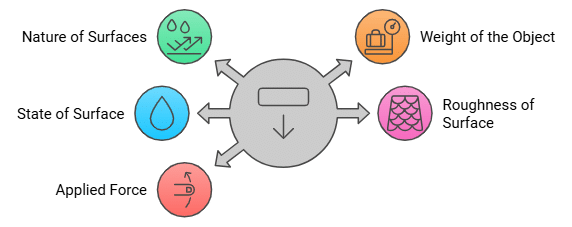
- Nature of Surfaces: The type of surfaces in contact is crucial. Smoother surfaces generally have less friction compared to rough surfaces.
- Weight of the Object: Friction is influenced by the weight or mass of an object. Heavier objects often encounter greater friction than lighter ones.
- State of Surface: The condition of a surface, whether dry, wet, or oily, can impact friction. Dry surfaces usually exhibit more friction than wet or oily ones.
- Roughness of Surface: The roughness of surfaces in contact directly affects friction. Irregular or rough surfaces generate more friction.
- Applied Force: The force applied to an object influences the frictional force. As the applied force increases, so does the friction opposing the motion.Question for Short Notes - FrictionTry yourself:What determines the force of friction between two surfaces?View Solution
Consider holding a kulhar (earthen pot) versus a glass tumbler. Friction plays a role in making the tumbler easier to hold.
Friction : A Necessary Evil - Surface Condition: Greasiness or a film of cooking oil on a glass tumbler affects holdability, highlighting the influence of friction.
- Importance of Friction: Imagine attempting to hold a glass without any friction; it would be challenging or impossible.
- Mobility: Moving on a wet muddy track or wet marble floor is difficult due to reduced friction. Friction is crucial for walking.
- Writing: Writing with a pen or pencil relies on friction. Chalk on a blackboard sticks due to friction between the chalk and the board.
- Motion Control: Friction is necessary for starting, stopping, and changing the direction of motion for automobiles on the road.
- Construction: Building construction involves the use of friction, from fixing nails in walls to tying knots.
- Drawback of Friction: Friction wears out materials like screws, ball bearings, and shoe soles, leading to wear and tear.
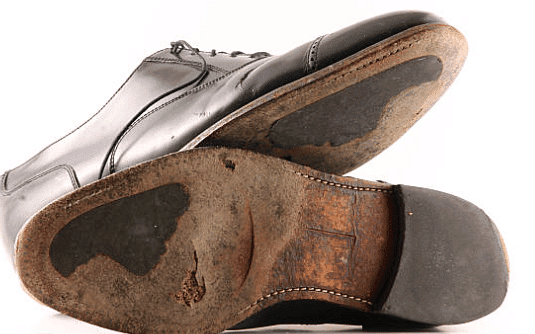 Shoe Soles Lead to Wear and Tear Due to Friction
Shoe Soles Lead to Wear and Tear Due to Friction
- Heat Generation: Friction can produce heat, as felt when rubbing palms together or striking a matchstick against a rough surface.
 Striking a Matchstick
Striking a Matchstick
- Energy Wastage: Machines operating with friction generate heat, resulting in energy wastage. Minimizing friction is essential.
Increasing and Reducing Friction
When Increasing friction is necessary?
- Shoe Design: The grooves on shoe soles enhance grip on the floor, promoting safe movement.
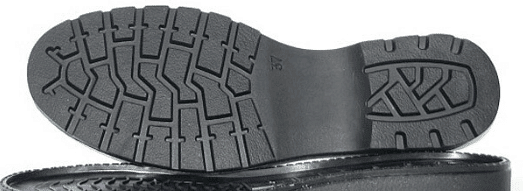 Grooves on Shoe
Grooves on Shoe
- Tyres and Brakes: Treaded tyres on vehicles increase ground grip, and brake pads intentionally increase friction for effective braking.
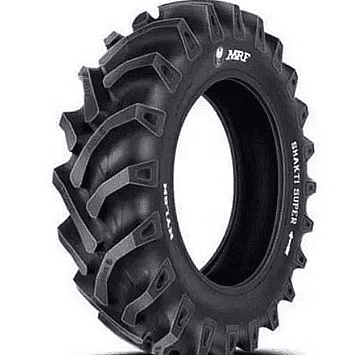 Treaded tyres
Treaded tyres
- Sports Techniques: Kabaddi players use soil on hands for a better grip, and gymnasts apply substances to enhance friction for improved performance.
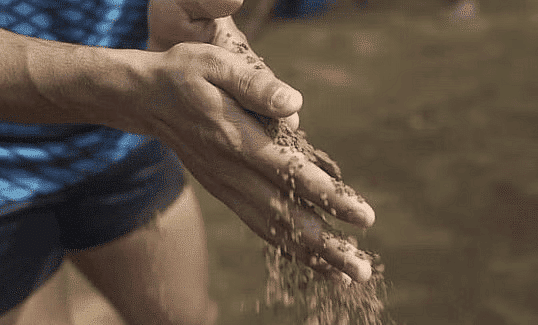 Kabaddi Player using Soil
Kabaddi Player using Soil
When Increasing friction is necessary?
- Carrom Board and Hinges: Sprinkling fine powder on a carrom board and applying oil on door hinges reduce friction, enabling smoother movements.
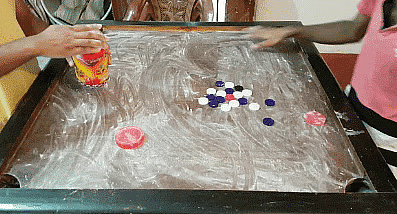 Fine Powder on Carrom
Fine Powder on Carrom
- Mechanical Lubrication: Using grease, oil, or graphite between moving parts in machines forms a thin layer, preventing direct rubbing and ensuring smooth movement.
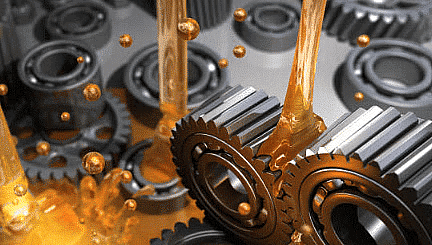 Mechanical Lubrication
Mechanical Lubrication
- Lubricants: Substances like oil, grease, and graphite that reduce friction are called lubricants.
- Air Cushion: In some cases, an air cushion is used between moving machine parts to minimize friction.
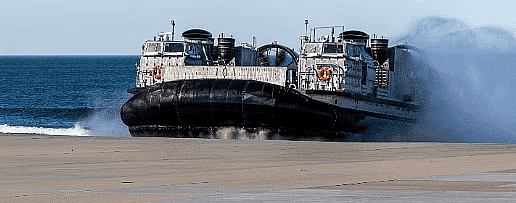 Air Cushion Used in Ship
Air Cushion Used in Ship
Wheels Reduce Friction
Rolling Luggage attachés and luggage pieces with rollers make it easy for even a child to pull them, reducing the resistance to motion.
 Rolling Luggage
Rolling Luggage
- Rolling Friction: When one body rolls over another, the resistance to motion is termed rolling friction.
- Advantages of Rolling: Rolling is easier than sliding a body over another, making luggage with rollers convenient to pull.
- Wheel Invention: The wheel, considered one of mankind's greatest inventions, is efficient due to reduced rolling friction.
 Wheel Invention
Wheel Invention
- Comparison of Frictions: Rolling friction is smaller than sliding friction, making rolling preferable.
- Ball Bearings: To further reduce friction, machines use ball bearings. Examples include ceiling fans and bicycles, where ball bearings are used between hubs and axles.
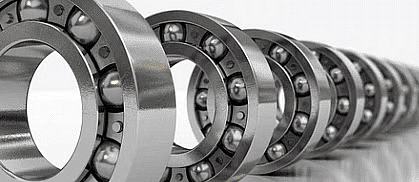 Ball Bearing
Ball Bearing
Static Friction:
The frictional force that prevents an object from starting to move when a force is applied.
Acts between surfaces at rest relative to each other.
It increases with applied force up to a maximum limit (called limiting friction).
Example: A heavy box that does not move when you push it lightly.
Sliding Friction:
The frictional force that opposes the motion of an object already sliding over a surface.
Acts between surfaces in relative motion.
It is usually less than static friction.
Example: A book sliding across a table.
Fluid Friction
Despite air being light and thin, it exerts frictional force on objects moving through it. This also applies to water and other liquids, collectively known as fluids.
- Fluids: In science, gases and liquids are referred to as fluids. Frictional force exerted by fluids on objects in motion through them is called drag.
- Factors Affecting Drag: The frictional force (drag) in a fluid depends on the object's speed with respect to the fluid, as well as the shape of the object and the nature of the fluid.
- Energy Loss: Objects moving through fluids must overcome friction, resulting in energy loss. Efforts are made to minimize friction by giving objects special shapes.
- Nature-Inspired Designs: Scientists take hints from nature, observing birds and fishes, which have evolved shapes to minimize energy loss in overcoming fluid friction.
- Vehicle Designs: All vehicles, including airplanes, are designed with shapes that reduce fluid friction, drawing inspiration from natural forms to enhance efficiency.
 Airplane Design
Airplane Design
|
90 videos|415 docs|44 tests
|
FAQs on Friction Class 8 Notes Science Chapter 9
| 1. What is friction? |  |
| 2. What are the factors affecting friction? |  |
| 3. Why is friction called a necessary evil? |  |
| 4. How can friction be increased? |  |
| 5. How do wheels reduce friction? |  |





















